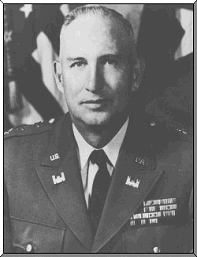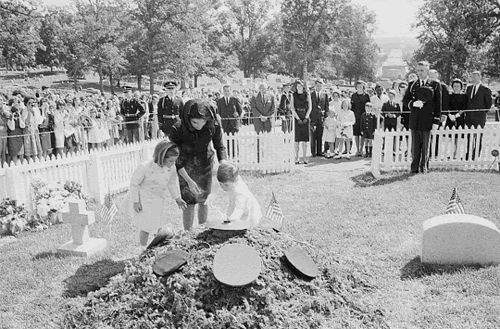Army Engineers Designed and Built President John F. Kennedy's Original Eternal Flame at Arlington National Cemetery
 |
| Lt. Gen. Walter K. Wilson |
On 22 November 1963, as our nation and the world reeled in shock from the assassination of President John F. Kennedy, the U.S. Army Corps of Engineers were given the last-minute critical tasks of locating his gravesite in Arlington National Cemetery and designing and constructing the eternal flame that would mark it. Moreover, the eternal flame had to be installed and functioning by the next day—the day the nation buried its young president.
According to William Manchester, Kennedy family friend and author of Death of a President, Jacqueline Kennedy said that when she accompanied her husband’s body to the Capitol Rotunda to lie in state, the idea of an eternal flame “just came into my head.” On an earlier trip the Kennedys made to Paris, Mrs. Kennedy had seen such a flame at their memorial to the French Unknown Solider at the Arc de Triomphe.
Chief of Engineers at the time, Lt. Gen. Walter K. Wilson, Jr., recounts the Corps efforts to complete these important assignments in his published oral history interview, Engineer Memoirs—Lieutenant General Walter K. Wilson, Jr., excerpted below:
- "Now about the same time it developed they wanted an eternal flame, and guess to whom they turned to get the eternal flame? They decided on Sunday they wanted the eternal flame. The funeral was on Monday. So suddenly, again a mission arrived to the Chief of Engineers, this time to produce an eternal flame by the time of the burial in the morning.
"We immediately assigned the mission to General Cassidy, who had been my deputy and had replaced me at Fort Belvoir as commanding general. So he called on his specialist training people to come up with something. We all got together on the concrete floor of an Engineer School building and we laid out different things that might work and tried to figure out what we could do. We figured we couldn’t possibly get in a permanent [natural] gas line that soon. We’d have to go to propane gas. We’d have to get several bottles of propane gas and put them in a bunch of shrubs there and run a tube underground over to the gravesite. And where could we get the thing that would produce the flame? Well, we started hunting and we found people who knew where such things could be. And we started people clear up in Maryland going to pick up some of these things and some propane gas tanks. We designed right on the floor there the concept of what would be the eternal flame. The school troops began fabricating it.”
Generals Wilson and Cassidy gave the task of fabricating the eternal flame to Col. Clayton B. Lyle, a veteran Army engineer with a 27-year career. With no time to carefully design and plan such a device, he and his staff at the Engineer School had to work from scratch. While scavenging through electrical shops, they found a “luau lamp” or "tiki torch" normally used at outdoor parties. They tested it by soaking it with water and blasting it with air, but it continued to burn. Lyle’s engineers then crafted a base for the lamp by welding metal strips into a support frame. Thirty hours and a sleepless night after General Wilson’s edict, the project was complete.
Early on the morning of the funeral, General Wilson went to Arlington Cemetery, according to his Memoirs, “to see how we were doing and there they had it. It was all ready to go. As a matter of fact I tested it by lighting it because I didn’t want it to blow up or cough or something on Mrs. Kennedy. So I was given the privilege of lighting the first test run. And it worked. I looked where the grave had been dug. It was a very nice location…. [L]ittle things like that helped ease the pain.”
After the funeral service and burial, millions watched on television as Mrs. Kennedy, joined by Robert Kennedy, took a burning candle from her military escort. When she touched the lamp, the flame leapt up and remained lit.

Caroline, Jacqueline, and John F. Kennedy, Jr.,
place flowers at the base of the eternal flame
Colonel Lyle has always regretted that the eternal flame he built was necessarily a makeshift project. The Corps’ creation lasted for more than a year, during which time thousands of people visited the grave. Because of these large crowds, cemetery officials and Kennedy family members decided that a more suitable site should be constructed. In 1967 President Kennedy was quietly reinterred in the permanent gravesite. Later, Colonel Lyle said, “I got more publicity out of the eternal flame than anything else that I ever did. I considered it an honor to be a part of it, but I’d rather not have had to do it.”
Sources:
Lt. Gen. Walter K. Wilson, Jr.’s memoirs
Excerpts from Colonel Lyle's story from arlingtoncemetery.com/eternalflame.htm
* * *
November 2002